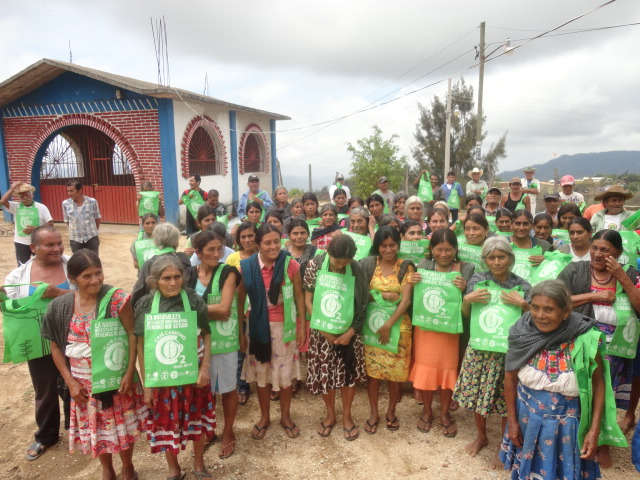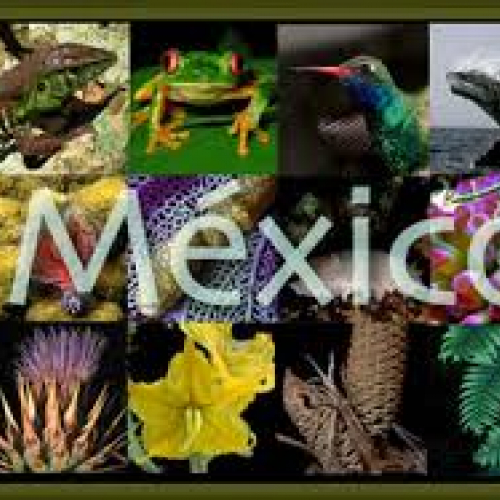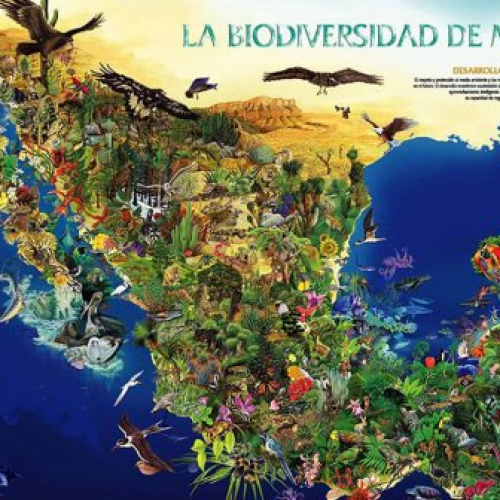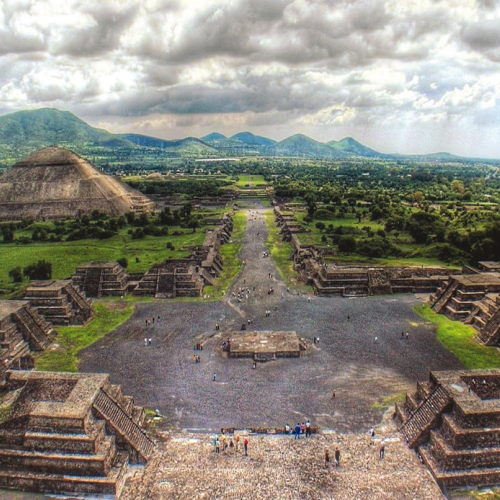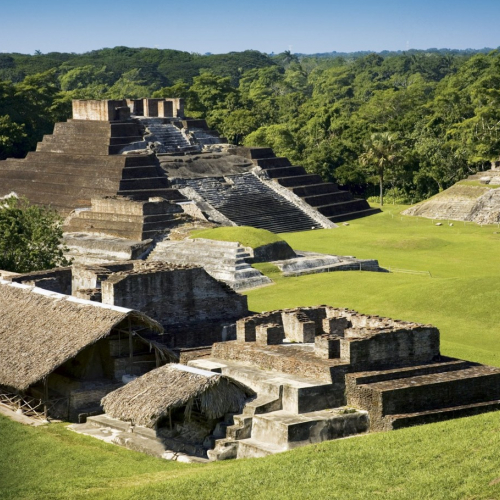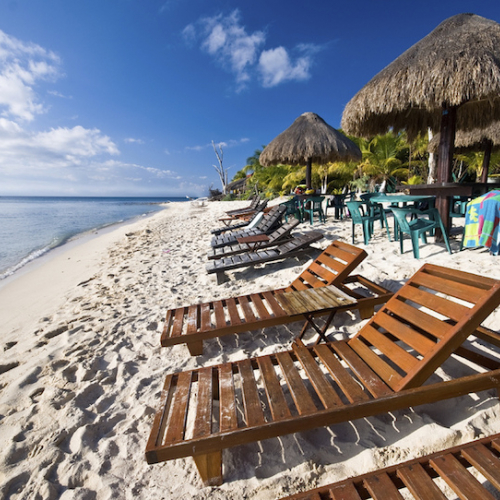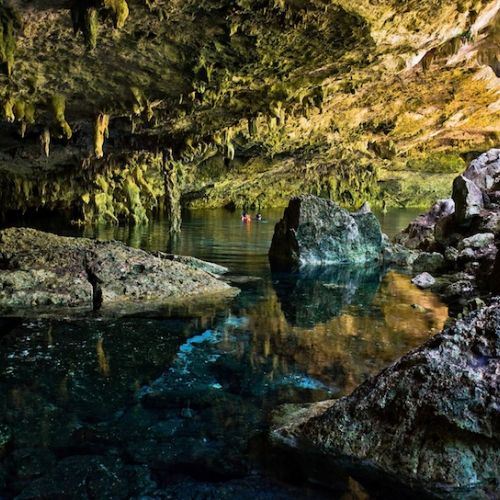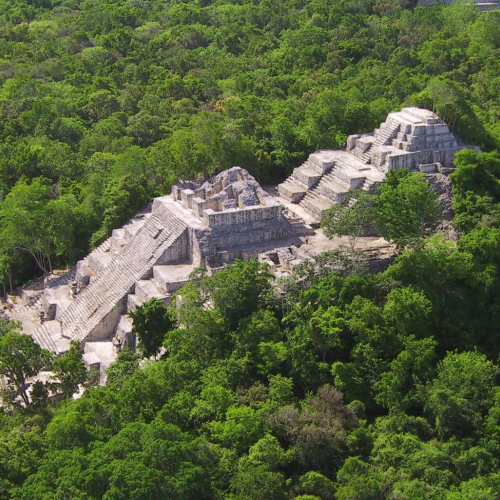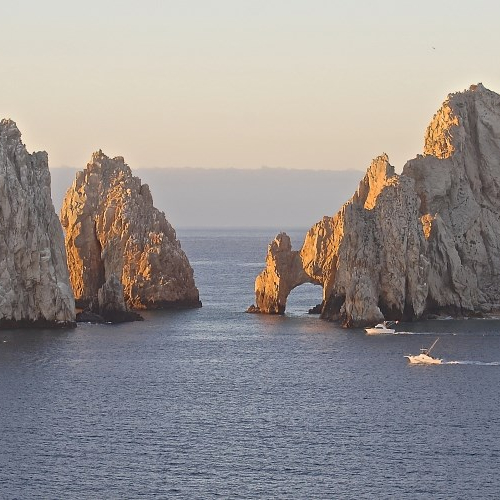Mexico
Did you know?
About
The largest in Central - North America, Mexico extends southwards from the USA to Guatemala and Belize, and from the Pacific Ocean to the Gulf of Mexico. The greater part of the country is high plateaux flanked by the Western and Eastern Sierra Madre mountain ranges. The principal lowland is the Yucatan peninsula in the southeast. The climate varies with latitude and altitude: hot and humid in the lowlands, warm in the plateaux and cool with cold winters in the mountains.
The North is arid, while the far South has heavy rainfall. Mexico City is one of the world's largest conurbations and the center of trade and industry. A quarter of active workers in Mexico are involved in agriculture although it doesn’t show in export balance which represents less than 10% of total exports. Indeed Mexico is exporting high value goods.
Mexico is rich in minerals, including copper, zinc, lead and sulphur, and is the world's leading producer of silver.
It is one of the world's largest producers of oil, from vast oil and gas resources in the Gulf of Mexico. The oil and petrochemical industries are still the mainstay, but a variety of manufacturers are now producing including iron and steel, motor vehicles, textiles and electronic good. Mexico is on of the main destination of tourists from United States which makes the country as the 8th tourist destination is the world
México is a country full of history, tradition, culture and nature, but not only that makes Mexico rich but the warm people and vast diversity that can be tasted in every well produced and processed coffee bean...
- Ancient History since the Aztecs and all rich pre colonization cultures.
- Colonization and independization history makes México a unique country.
- 13th largest country in the world with a very diverse geography with a great range of climates and ecosystems.
- 4th world rank Biodiversity.
- One of the top tourism countries looking for the paradise beaches, mountains, deserts and magical towns.
- México Culture and tradition reflects the complexity of the country history, which has developed a unique identity, Cuisine, Music, literature, visual proves it.
- Mexico is also a modern city cautivated by coffee culture and on growing consumption every year.
Attached pictures related to each point above...
Coffee facts
Crop Periods
Flowering Period |
|
Main : From January until April |
Main: Most of the regions flower in April (2nd week)
Secondary:
- Flowering in low areas occurs from February to April
- Flowering in high areas occurs from March to May
Harvesting Period |
|
Main : From November until April |
From the low altitude growing regions (Veracruz) to the high altitude growing region (Oaxaca, Chiapas, Puebla)
Shipping Period |
|
Main : From December until Juni |
Which guarantees freshness of the more delicate Arabica beans. Truth is Mexico ships coffee all year round as Robusta can ship later in the year with little impact on quality.
Some examples :
- XPW and High Grown: January onwards
- Strictly High Grown: February onwards
- Arabica Naturals: March onwards
- Undergrades: the whole year (if crop year doesn’t matter)
- Robusta: January onwards
Transit Days
|
Port of Shipment |
Imp. |
EU |
US |
|
Veracruz (Atlantic) |
60-70% |
20 |
4 |
|
Nuevo Laredo (Tamaulipas) |
30% |
|
|
From Veracruz to New Orleans, you can count 4 days, but to Oakland it takes 15 days.
Destination countries
1. USA
2. Belgium
3. Germany
The export to USA is almost 65 % of the coffee export in Mexico, Belgium takes 7%, Germany 4%
ICO Figures
Varieties
The 680 981 hectares under coffee cultivation are spread over 4,300 communities across 12 states of the Mexican Republic, areas, according to the SAGARPA (Secretaría de Agricultura, Ganadería, Desarrollo Rural, Pesca y Alimentación), with slightly acidic soils. The chief producing states are Chiapas, Veracruz, Puebla and Oaxaca and the main varieties are Typica, Caturra, Bourbon, Catuai, Mundo Novo, Garnica, Catimor, Maragogype and Robusta. Recently the coffee sector has done a big effort to introduce tolerant and resistant rust varieties such as Marsellesa, Costa Rica 95, Colombia, Sarchimor and some hybrids developed by French organism CIRAD and ECOM Group in Mexico unique cloning lab.
Chiapas, which reaches up to the Guatemalan border, is by far the largest production region and accounts for one third of the total crop. Veracruz is mostly producing low grown coffees.
Some statistics
|
|
|
Production |
% |
Famers |
% |
hextares |
% |
|
1 |
Chiapas |
1 462 999 |
34 |
171 974 |
35 |
244 954 |
36 |
|
2 |
Veracruz |
1 086 516 |
25 |
86 164 |
18 |
138 676.9 |
20 |
|
3 |
Puebla |
927 424 |
22 |
46 781 |
10 |
67 428 |
10 |
|
4 |
Oaxaca |
434 985 |
10 |
101 886 |
21 |
130 721 |
19 |
|
5 |
Hidalgo |
143 661 |
3.3 |
34 125 |
7 |
24 636.24 |
4 |
|
6 |
Guerrero |
120 761 |
2.8 |
21320 |
4 |
40 509.76 |
6 |
|
7 |
Nayarit |
51 618 |
1.2 |
5395 |
1 |
17 256.85 |
3 |
|
8 |
San Luis Potosi |
45 017 |
1 |
17621 |
4 |
14 035 |
2 |
|
9 |
Jalisco |
10 796 |
0.3 |
1 097 |
0.22 |
77.25 |
0.01 |
|
10 |
Tabasco |
4 583 |
0.11 |
1 188 |
0.24 |
991.78 |
0.15 |
|
11 |
Colima |
6 381 |
0.15 |
817 |
0.17 |
1 278.87 |
0.19 |
|
12 |
Tiaxcala |
4 519 |
0.11 |
295 |
0.06 |
77.25 |
0.01 |
|
13 |
Querétaro |
740 |
0.02 |
38 |
0.01 |
247.42 |
0.04 |
Classifications
By region
We can mention 3 very important regions and their characteristics:
Region 1: Pluma Hidalgo (Oaxaca)- High Grown EP
Organoleptic Characteristics:
- Fragrance: floral notes
- Body: Good (mild coffee)
- Acidity: marked & pronounced
- Flavour: marked fruity notes (considered as a Gourmet coffee for its great flavour)
Physical Characteristics:
- Defects: 5 to 10 (350grs)
- Screen: 15 (25%) --- 16 & up (75%)
- Aspect: Green uniform
- Altitude: grows on altitude ranging from 1200 and 1300 meters above sea level
Region 2: Coatepec- San Marcos (Veracruz)- High Grown EP
Organoleptic Characteristics:
- Fragrance: floral & fruity notes (pleasant)
- Body: Light to medium (mild coffee)
- Acidity: medium to pronounced
- Flavour: mild and pleasant with citric and sweet marked notes.
Physical Characteristics:
- Defects: 5 to 10 (350grs)
- Screen: 15 (25%) --- 16 & up (75%)
- Aspect: Good, Green uniform
- Altitude: grows on altitude ranging from 1100 and 1200 meters above sea level
Region 3: Jaltenango (Chiapas)- High Grown EP
Organoleptic Characteristics:
- Fragrance: notorious to pronounced very fragrant with fruity notes
- Body: Good (mild coffee)
- Acidity: Pronounced and very marked
- Flavour: Pronounced with marked acidity and very pleasant notes as wine and fruits
Physical Characteristics:
- Defects: 5 to 10 (350grs)
- Screen: 15 (25%) --- 16 & up (75%)
- Aspect: Green uniform
- Altitude: grows on altitude ranging from 1100 and 1200 meters above sea level
By grade
|
Strictly High Grown |
above 1200 meters and above |
|
High Grown |
between 900 and 1200 meters |
| Extra Prime Washed |
between 700 and 900 meters |
|
Prime Washed |
between 500 and 700 meters |
Triage coffees that are also called Desmanches are not allowed for export.
By taste
Arabica
- Aroma= medium to good
- Acidity= high, medium high
- Body= medium
Robusta
- Aroma= good to regular
- Acidity= medium
- Body= good to regular
By defect
Even though official classifications are not used anymore, exporters make a distinction between US preparation and European preparation.
Maximum defects for a US prep is supposed to be 35 per 300 gr, for Europrep it is 15 defects per 300 gr.
In practice, the number of defects is often added to the description in order to avoid misunderstandings.
- European Preparation: 0-20 defects
- Exchange Preparation: 18-23 defects
- US Preparation: 23-50 defects
- 10%, 20% & 30%- Defects
- Undergrades: 40%-100% Defects
Typical Description
Mexico Prime Washed Europrep
Processing
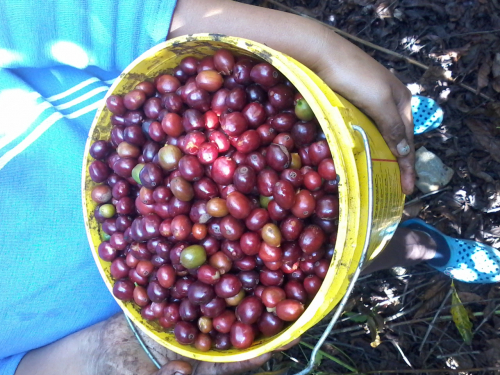
|
Picking |
Hand Picking |
|
Washing |
90% of the production is washed |
|
Fermentation |
In tanks for approx. 36 hours |
|
Drying |
In the sun and with dryers |
|
Sorting |
Mechanical, hand-picking and electronical sorting |
The whole process in a nutshell
Manual picking specially done by women and men from October to September.
- All begins with the cherry reception where quality determination is done to accept unloading to begin wet milling process.
- It’s very important to induct good practices in terms of clean and well harvested coffee in this stage.
Depulping
There are two processes involved depending on cherry quality.
- In the 1st process the cherries are depulped in machines manufactured with rubber to avoid breaking beans.
- The 2nd process or reprocess will be done with iron bodied depulpers.
Classification
- There are machines to separate ripe from unripe (“green”) cherries allowing the division of processes and higher qualities.
Fermentation
- Done naturally in fermentation tanks, this process releases the skin named mucilage that remains after depulping the cherry.
- Fermentation time could vary from 15 to 36 hours depending on water PH, temperature and humidity of the location.
Washing
- After fermentation it is required to wash the coffee in order to release mucilage from it; this is normally done with high pression water. Afterwards coffee is passed through a screen to minimize moisture excess.
Pre-Drying
- Done mainly through a constant flow “fall or cascada” dryer, fed by a direct fire oven. It purpose is to remove superficial humidity.
Drying
- Can be done through several methods, including full sun drying and African bed. The most common method however are drum dryers with air at a maximum of 70 C provided by an indirect fire oven.
Sorting
- Before Bagging, gravity tables sort coffee according to weight. Usually the heavier the bean, the better the quality.
- Electronic machines are used to remove discoloured beans from green beans.
Bagging & Storing
- Parchment is stored after finishing drying with moisture content around 12%.
- It is very important to avoid any kind of contamination, so warehouses are constantly cleaned and revised.
Coffee Environment
About growers
About three million people, including 350.000 labourers, work in coffee related activities in Mexico. Production involves more than 280.000 growers. Small holdings predominate and 90% of them are not bigger than 10 hectares. Although coffee still ranks as an important agricultural crop in the country, the small farmers are often caught in a cycle of poverty caused by a wide range of problems. These include scant access to credit, overdue debts from prior crop years, low yields and productivity and lack of technical assistance. Inefficient transportation and communication coupled with a lack of access to processing plants and the necessary financing to market their product, prevent small growers from adding value to their product along the productivity chain and becoming self sustaining.
Planting is controlled and the acreage has not increased very much over the years. The increased crops have come rather from the use of high yielding modern hybrid trees; a feature which applies to most Central American countries.
The exports are in the hands of private shippers. The city of Laredo, located at the US border, is a major place of delivery to the US trade and industry. The availability of coffee at this "hub" is considered as a useful buffer for the US market.
Official classifications became totally obsolete and private exporters often have their own standards.
The US specialty roasters as well as some European roasters purchase on the basis of the 'Beneficios' name. Many of these have established a reputation for their product over the years and can use that name as a basis for contracts.
Nice to know
Manuel Garcia Corpus, delegate of SAGARPA, a Mexican government institution, said that a program will be launched in a Mexican State to rescue the coffee field, which is in crisis because of low costs found in the market as well as many other reasons. This conference was also conducted by Enrique Peña Nieto to detail the reforms in the field. They agreed that it was very important to help the coffee sector as it generates billions of pesos for the country economy.Finally, the delegate said that with the new reforms will help on small farmers and farmers support.
The coffee production chain in Mexico is one of the most important of the agro-industrial mexican sector.
There are 511,672 registered growers; 499,299 of them are actively working or related with coffee farms:
- Men: 71.2%
- Women: 28.7%
- Corporations: 0.1%
Cooperations:
- UNECAFE
- GRAPOS
